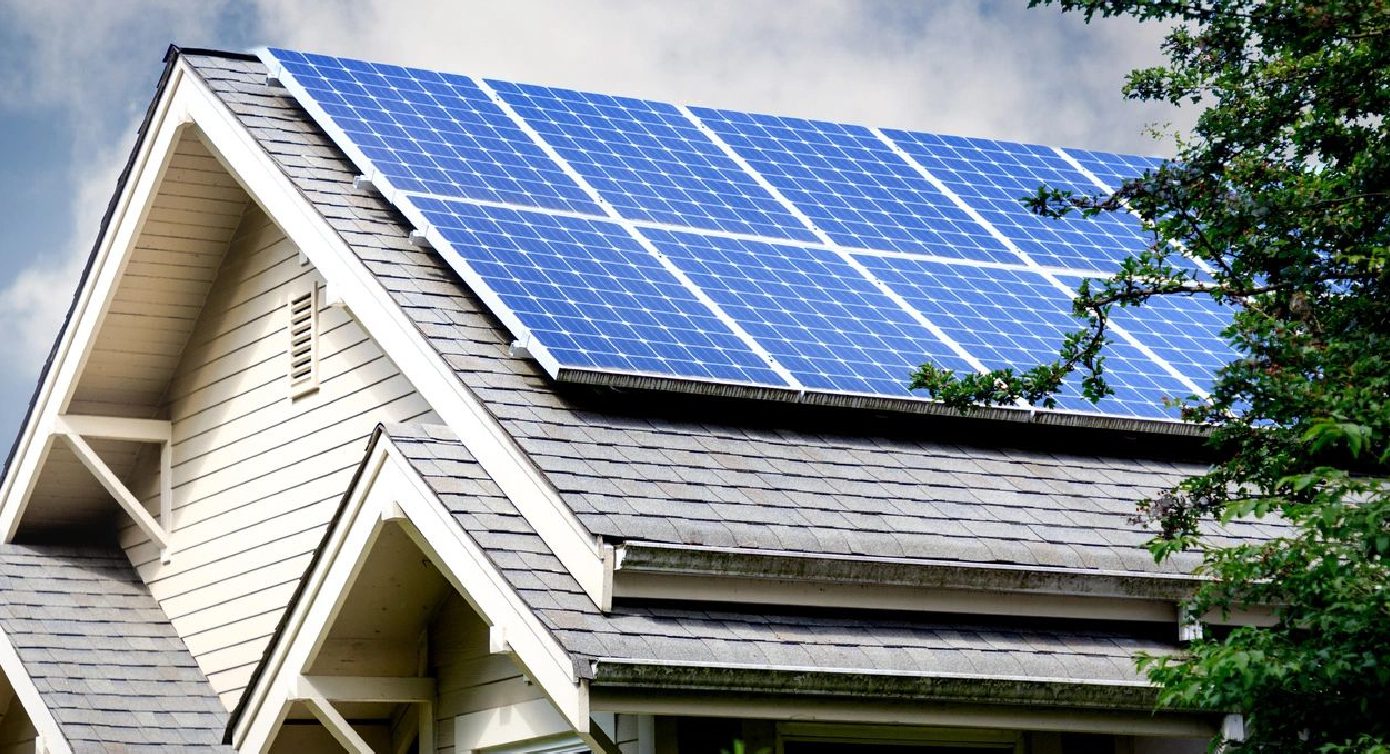Install a Solar Panel System Today for a Brighter Tomorrow
Switching to solar is a great investment in your property and lowering electric bill. Are you ready to take the next step in renewable solar energy? Here’s where to start!
Our company offers free home energy consultation and some of the best warranties in the roofing and solar industries, like:
- 25-Year Labor Warranty
- 25-Year Production Guarantee
- 25-Year Solar Panel Microinverter and Envoy Warranty
Install a Solar Panel System Today for a Brighter Tomorrow
Switching to solar is a great investment in your property and lowering electric bill. Are you ready to take the next step in renewable solar energy? Here’s where to start!
Our company offers free home energy consultation and some of the best warranties in the roofing and solar industries, like:
- 25-Year Labor Warranty
- 25-Year Production Guarantee
- 25-Year Solar Panel Microinverter and Envoy Warranty

HOW SOLAR ENERGY WORKS Solar has three major components.
Solar Panels
Solar panels typical power varying from 365 watt to 440 watt panels, made typically out of silicone, capture the sunlight energy into DC electricity
Micro inverter
Micro inverter, which on systems we work with, are placed on each panel, converts the DC electricity into alternating current (AC) electricity, which is the type of electricity used in homes
IQ Controller/Envoy communication box
Gateway is connected to your Grid (Main Service panel from your electric company) and all the lines coming in from the micro inverters. The Gateway is used as a connection tool between the energy company and your solar system, and is a monitoring tool to communicate your energy usage and consumptions.
Batteries
Batteries are not necessary but can be added for an additional cost to help store the extra energy you produce and act as your backup if power was to go down. Batteries also assist with lowering your net metering cost. The electric companies increase their energy rates in the evening when energy usage is at the highest and when the sun is down so you are not getting any solar energy. Using your batteries to power your home at night lowers your overall net metering energy cost.
Frequently Asked Questions
The tax incentive is not received in full when you do your taxes the following year after you install your solar system. Tax incentive in general you can only get back what you put in that tax year. For example if you paid $8k in federal taxes from your paycheck for a year you will only be able to receive $8k for that year and any balance left over from the tax credit you can use on the following tax year. You do have 10 years to collect the full tax credit. But as always you want to consult with a tax accountant.
We will start the panel sizing process by getting your last year energy usage from your energy company. You provide us with the first page of your last bill which in most cases has your summary of your last 12 months of Kilowatt usage. Once we have your last 12 months usage for your home we can then size the system with the goal to get you 100-110% coverage of your energy usage so your solar offsets your energy bill completely or as close to 100% each month so you have no energy bill. Keep in mind almost every energy company does charge a monthly minimum connect fee anywhere from $15-$30.
When you install solar on your home you are still connected to the grid (energy company). Your solar system during the day will generate energy that gets converted to energy your home is able to use and will feed your home directly. During times your home needs more energy than your solar system is generating you will pull the energy needed from your energy company to power all the needs of your home. During the time your solar is generating more energy than your home needs it will directly feedback to your energy company and they will credit you that energy. So all through the day you are giving and taking energy to and from your energy company. At the end of each month is when you energy company will tally up all the energy given and taken and they net that out. If you used more than you gave you pay that difference. If you gave more than you used, they bank that extra energy as a credit and your able to use that credit or get a refund in February of every year.
All components of your solar system have a 25 year warranty on parts. Batteries typically have a 15 year warranty. Most reputable solar companies will give you a 10 year full workmanship labor warranty. We at Sunray will give you a 10 year workmanship warranty and we will cover any warranty work labor for the full 25 years. If we do your roof and your solar we provide a fully wrapped roof and solar leak free warranty for 25 years. The only thing not covered in that warranty is a case of a class 2 or more hurricane damage but your home insurance does cover you.
Solar typically costs $2.70 - $4 per watt. The price range varies due to the type of roof you have, pitch of your roof, how many stories of your home, etc.
For us at Sunray, we typically install a solar system in 5-6 weeks from start to finish.
Solar financing tends to be an easier loan to get. Most of them are unsecured loans. Finance company will secure the loan with a UCC filing on the equipment only, not on your home. But it is important to understand the kind of financing you are getting. Most of the solar finance companies do offer a decent interest rate but they charge anywhere from 15-30% in dealer fees. So those dealer fees can greatly increase the overall cost of your solar system. Look at it as your buying down the rate to lower your interest rate. For example the going interest rate for solar is $7.5%. Some solar finance companies will offer a 4.99% rate but add a 20% fee to the loan. So always ask or understand if you are paying for dealer fees and if you are how much those fees are! In some cases having a dealer fee is not bad, but in some cases it is. It’s just important for you to know so you can make the right decision for your situation!
There are three major systems on the market today. We will list them for you and give you pros and cons of each:
Tesla:
Pros:
- Tesla battery system is pretty good.
Cons:
- System servicing/warranty work tends to be slow
- System tends to be unreliable and then hard to get someone to service it in a timely manner
- Not as many installers to work on system
- Tesla only makes battery system. Rest of components are from other manufacturers.
Solar Edge:
Pros:
- System is usually little cheaper than other systems
- They use optimizer inverters so you can see individual production per panel
- Second largest solar system manufacturer.
Cons:
- Optimizers are not as reliable or as easy to use as micro inverters
- System tends to not be as easy to work with
- Less overall quality of system
Enphase:
Pros:
- Enphase system are cost efficient
- Micro Inverter system so you can see each panel production but also easy to service and monitor.
- Monitoring app is easy to use and understand. Shows detailed system information including each panel production and total system production.
- Enphase provides the highest technology inverters and system on the market
- Enphase is the #1 solar system in the country.
- If one micro inverter goes down it only stops production on that one panel, rest of panels/system work as normal.
- Quick servicing and warranty turn around
Cons:
- Tends to be little more expensive than solar edge system
A kilowatt hour (kWh) is a unit of energy used by an electrical device or home during a given period. For example, 1 kWh could be 1,000 watts used over 1 hour or 10 watts used over 100 hours. A typical home uses 60-120 kw a day.
Got Questions?
Send us a message at Sunray Roofing and Solar to learn more about solar installation and incentives. Our experts will gladly give you the information you need.

Look at solar energy as buying your energy instead of renting it. It is now a cost you invest into your home but now you have more control over your energy and costs.
PROS:
Decreases use of non-renewable resources
Reduces power bill
Energy independence
Long-term savings
Low-maintenance
Diverse Uses
Power prices are rising
Tech is improving
CONS:
High upfront costs
Sunlight dependent
Space constraints
Environmental impact of manufacturing
Difficulty with relocation
Disposal/recycling options may be limited